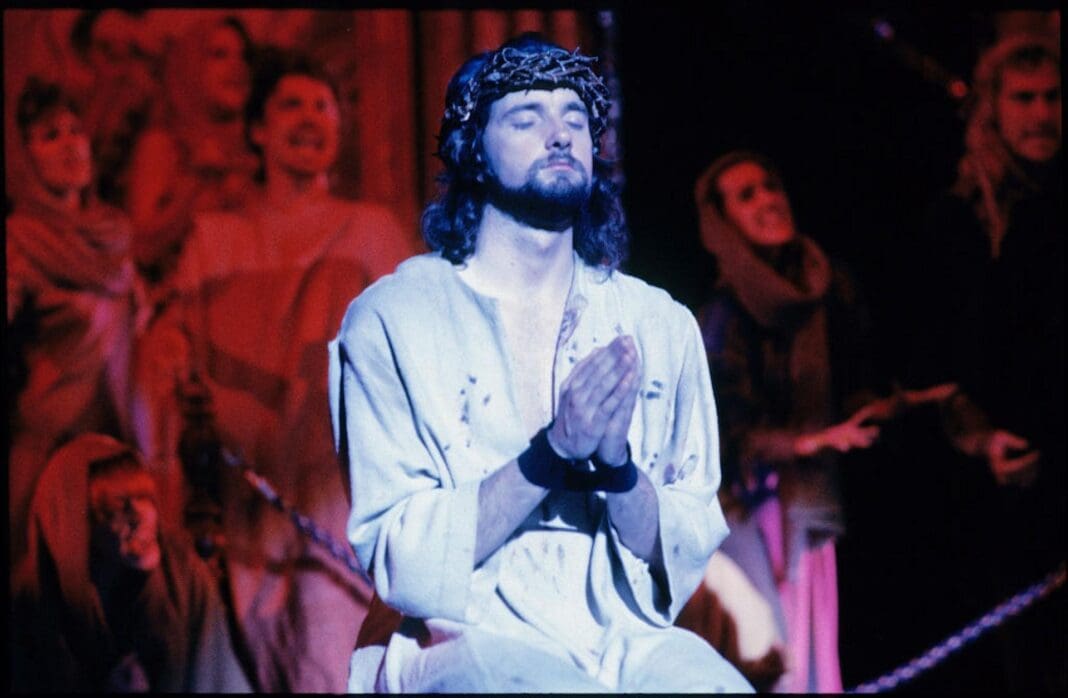Uncommon Courses is an occasional series from The Conversation U.S. highlighting unconventional approaches to teaching.
“Jesus in the Modern Imagination”
My only real exposure to religion while growing up was “Jesus Christ Superstar” – the 1973 film version of the much-debated Broadway musical. Every Easter, my parents would throw it on, and I listened to the soundtrack on repeat until I knew every word.
My journey to studying religion was really a happy accident. I had always been enamored by ancient history and planned to research gender and sexuality in the ancient Mediterranean. An adviser suggested I look to early Christianity – and from the moment I first read about Mary of Egypt, a prostitute who became a saint in the desert, I was hooked.
When I finally started graduate work in religious studies, I knew next to nothing about the Bible. “Superstar” and other biblically inspired musicals like “Joseph and the Amazing Technicolor Dreamcoat” were my primary reference points. Drawing comparisons in class, I realized how much of my understanding of religious narratives had been shaped by pop culture.
I knew I probably wasn’t alone in this, so I designed a course that explores the relationship between religion and media.
Although the course has “modern” in the title, a lot of what students and I do is to look at ancient depictions of Jesus and compare it to more modern films, comics and music.
For example, I teach a unit on the “lost years” of Jesus’ life. The four canonical gospels in the Bible either completely ignore Jesus’ youth or basically jump from his birth to his adult life. This gap naturally leads to questions: What was Jesus like as a kid? Was he very pious? A troublemaker?
This is where apocryphal sources – early Christian literature that wasn’t included in official versions of the Bible – can start to fill in the gaps. Students discuss the Infancy Gospel of Thomas, a second-century narrative about Jesus’ childhood. This text depicts Jesus disobeying his parents, talking back and even killing people with his divine powers, though he resurrects them all in the end. We read this alongside portions of novelist Christopher Moore’s book “Lamb: The Gospel According to Biff, Christ’s Childhood Pal.” Moore’s 2002 comedy depicts a teenage Jesus traveling around the world in order to learn how to become the messiah.
But every time you try to fill one gap, even more questions pop up. For example, it may sound silly, but did Jesus, whom the canonical gospels portray as a bachelor, ever have a crush? If he did, would that change conversations about celibacy and sexuality? Once we start peeling back these layers of what we can and cannot know, and how different depictions of Jesus have imagined him, it always leads to really fascinating classroom conversations.
Jesus is a perpetually contested figure. Is Jesus a teacher of peace or a warrior? A socialist or a capitalist sympathizer? Is he the manliest man to ever exist or a transgressively feminine figure? Depending who you ask, American Christians see Christ as all these things and more.
These are hot-button questions, ones that influence individuals and whole societies. But they cannot be easily answered – or sometimes answered at all – by the Bible. Understandings of Jesus are also deeply shaped by people’s cultures, norms and desires, which we see reflected in everything from second-century texts to modern comics and Monty Python’s “Life of Brian.”
This course does not attempt to answer the question, “Who was Jesus?” However, it examines how humanity has grappled with it, both historically and today.
Above all, this course gives students the tools to better analyze how interpretations of religious and historical figures are shaped by the communities that imagine and re-imagine them. It allows the class to see just how complicated religious figures like Jesus are and to analyze the motivations behind specific interpretations.
Oh, and students also get to make their own Jesus movies at the end of the semester – which is pretty awesome.
This article is republished from The Conversation, an independent nonprofit news site dedicated to sharing ideas from academic experts. The Conversation has a variety of fascinating free newsletters.
Read more: What early Christian communities tell us about giving financial aid at a time of crises Future Air Force officers get a 30,000-foot view of death in this course
Jeannie Sellick receives funding from the Andrew W. Mellon Foundation.














